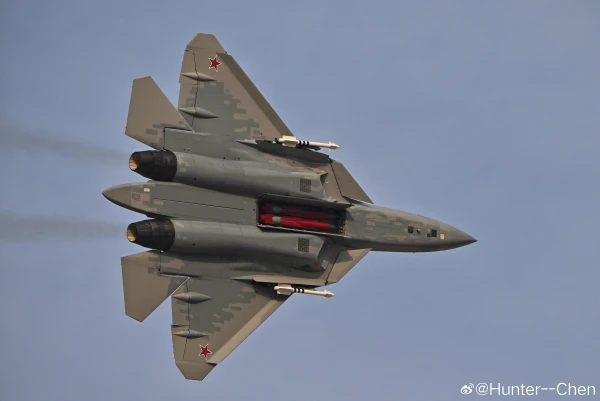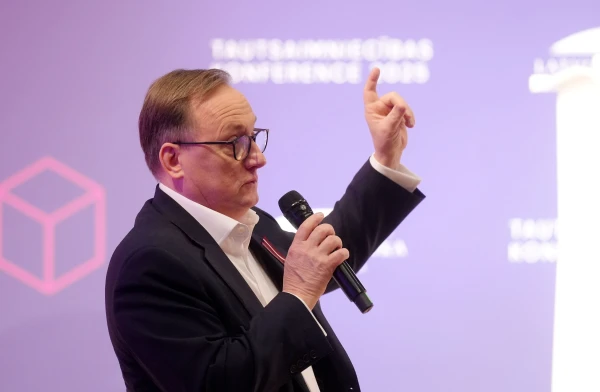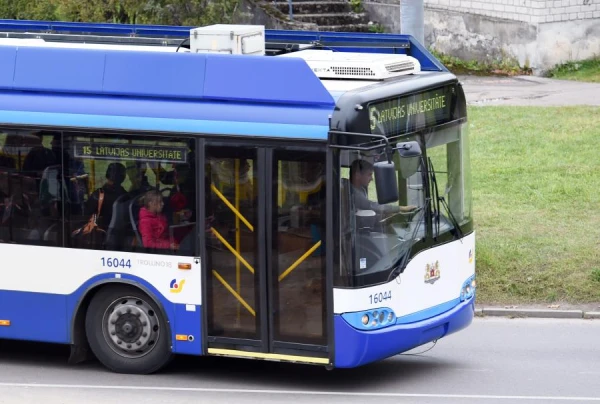
The Su-57 will compete with the F-35 in the wealthy markets of the Middle East.
The Dubai Airshow 2025, one of the largest in the world, has opened in Dubai and has become the most extensive in its history. It brought together about 1,500 companies in the fields of aviation, defense, and space from 115 countries, showcasing more than 200 aircraft.
Russia presented its fifth-generation stealth fighter, the Su-57 from the United Aircraft Corporation, at the airshow, publicly unveiling its hidden compartments containing air-to-air and air-to-ground missiles for the first time. The export modification of the Su-57, the Su-57E, equipped with the AL-51F1 engine, was showcased at Dubai Airshow 2025.
Previously published videos and photos of this fighter attracted the attention of Military Watch Magazine, particularly its armament with the new Kh-58USHKE missile designed to combat enemy air defense systems.
During the demonstration flight at the airshow, the latest American stealth fighter, the F-35 from Lockheed Martin Corp., was also showcased. It is already available on the arms market and costs around $100 million.
The Su-57E has not yet been sold for export, and its price and specifications have not been publicly announced. Both aircraft were first presented at the Aero India 2025 exhibition in February; they are considered to be the main competitors in the battle for defense budgets in the Middle East.
According to The Moscow Times, Russian arms exports have decreased by 47% compared to 2022, when Russia began its full-scale invasion of Ukraine. This is stated in a report by the Stockholm International Peace Research Institute (SIPRI).
Experts explain that Russia is likely prioritizing the production of major types of weapons for its own armed forces rather than for export, and is also facing the consequences of sanctions and increased pressure from the U.S. and its allies on other countries to refrain from purchasing Russian weapons.
As a result, over the past five years, Russia's share of the global arms market has decreased by 7.8%, and Russian arms exports have fallen by 64%. The number of countries purchasing its weapons has also decreased, from 47 in 2018–2022 to 33 in 2024.
74% of Russian arms exports go to Asia and Oceania, 12% to Africa, and only 7.4% to Europe.
India remains the largest buyer of weapons from Russia, accounting for 38% of deliveries. China (17%) and Kazakhstan (11%) follow in second and third place, respectively. The largest deliveries this year are expected to India, Iran, and Saudi Arabia.
However, despite the collapse of its arms exports, Russia, as noted by SIPRI, remains among the top three leaders in this market. In 2024, it became the second-largest arms exporter in the world, selling weapons and military equipment worth $13.75 billion. The United States ranked first with an export volume of $42.3 billion, while France took third place ($7.6 billion).
The top ten largest arms exporters also include South Korea, Italy, Germany, Sweden, Israel, Norway, and China.
<iframe width="560" height="315" src="https://www.youtube.com/embed/HiJDu4AQjY0?si=HC-iMXTdDxZ4dIMO" title="YouTube video player" frameborder="0" allow="accelerometer; autoplay; clipboard-write; encrypted-media; gyroscope; picture-in-picture; web-share" referrerpolicy="strict-origin-when-cross-origin" allowfullscreen></iframe>











